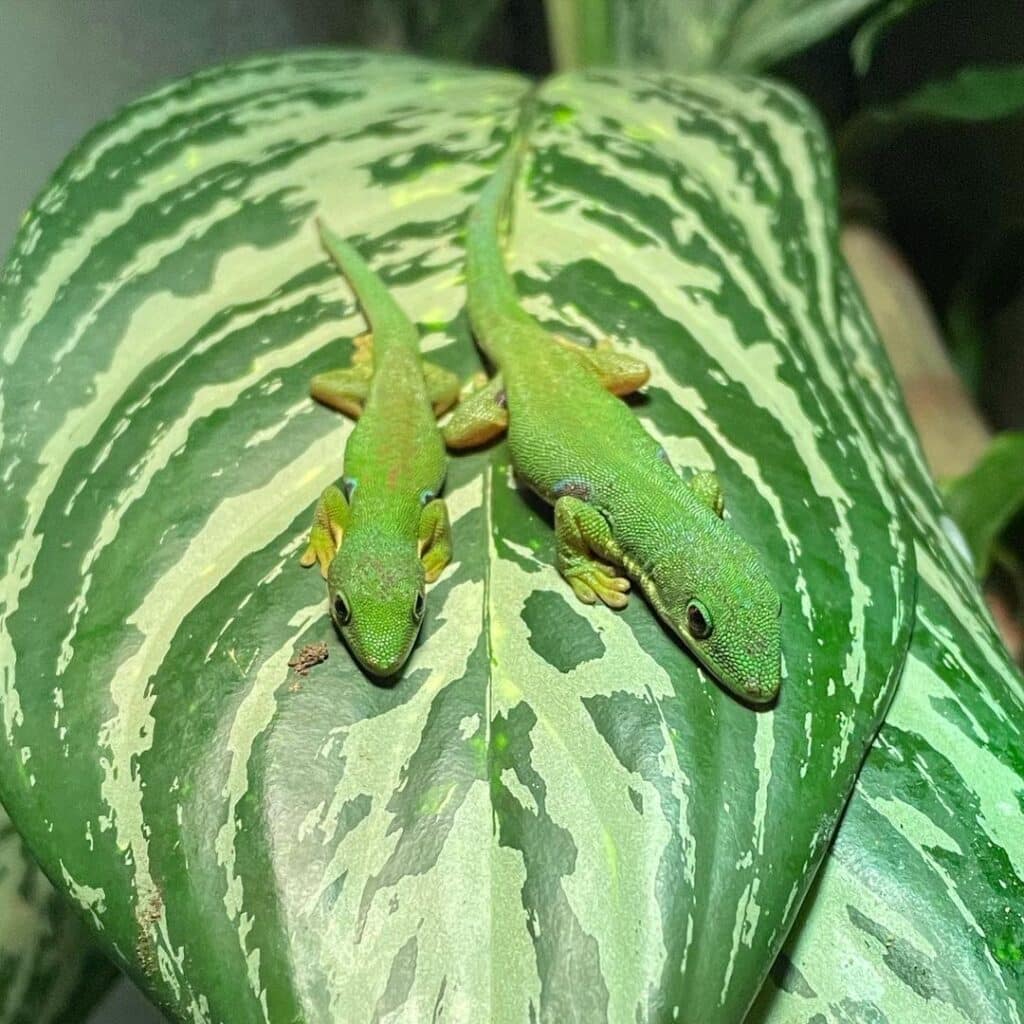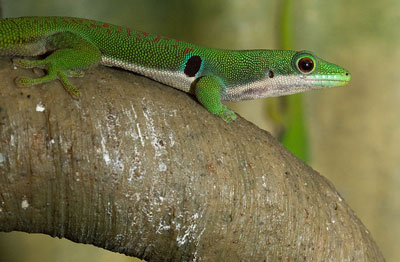Peacock Day Gecko
Primarily a Rich, Emerald Green Color, With Red Marking
Peacock day geckos (Phelsuma quadriocellata) are one of the members of the genus Phelsuma. They are dominant in the Islands near Madagascar which experiences a tropical climate with abundant rainfall, high humidity, and relatively high temperatures. You normally find them in areas with heavy rainfall.

Anatomy
The most outstanding physical characteristic of the Peacock Day Gecko is their abundant emerald-green coloration and the red markings that appear on their heads and backs. They have black spots, which covers the front of their rear legs and behind their rear legs. Perhaps this is how they got their name. These subspecies will range from 3.5 to 5 inches in length. You can expect a life span of around ten years in a good environment with ample supply of nutritious food.
As a Pet

Housing
You must not house these reptiles in a cramped space though they are small. You should have at least the Zoo MED Medium Naturistic terrarium for a minimum size of housing for one adult gecko. The traditional glass aquarium may also serve as an alternative housing, although it may look more difficult to run a daily maintenance without the front opening cage. As these peacock day geckos are highly mobile, you would do well to offer as large a space as possible. For a pair of peacock day geckos, 18 x 18 x 24 inch cage is ideal. You should remember that the housing option should closely correspond to the natural habitat. It is therefore inevitable to offer abundant humidity, relatively high temperature and plenty of plants in the cage.
Substrate

To meet the needs of the peacock day gecko, a naturalistic planted vivarium will meet most of the needs of these geckos. The setup of the cage will largely determine the proper substrate to use. Imitating the natural habitat is ideal and since these geckos inhabit rainforests, you should provide them with a combination of Polyform, which acts as a divider between drainage and layers of plantings, moss and ecoerth growing substrate that should offer a mixture of nutritious elements for proper growth of the livefauna in the vivarium. Use Hydroton balls for drainage.
Heating & Lighting
To ensure retention of their beautiful coloration, these reptiles, you should provide them with good quality lights and heat in their terrarium, failing they will become dark and drab regardless of the best color specimen you had bought. Your budget on heating and lighting will determine the healthy condition of these lovely peacock day geckos. Do not compromise on these conditions and maintain these lighting and heating conditions throughout to keep the color of the geckos.
Water and Humidity
Mist the cage thrice a day to imitate the humid rainforests. These will provide similar tropical conditions for the well-being of the geckos.
Spray water on the plants for these geckos to lick since they prefer it to direct drinking from a bowl. However, keep a bowl of clean and fresh water.
Feeding
Peacock day geckos will feed on common insects in captivity. This includes small roaches, crickets, small silk worms and wax worms, among others. If you can find another variety of insects, you should feed them to the geckos as this will not only increase their appetite but also provide a greater variety and offer a wider range of nutrients. Otherwise, artificial supplements like reptile vitamins, and calcium containing D3 would do well. Feed egg-laying geckos with supplements at every feed. For the rest a weekly offer is enough. Follow the procedure described on the labels of supplements for the best results. Commercial reptile diets are also a viable alternative for these species.

Having discovered a fondness for insects while pursuing her degree in Biology, Randi Jones was quite bugged to know that people usually dismissed these little creatures as “creepy-crawlies”.







